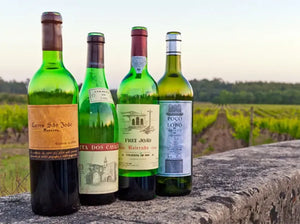Blog » Portugal
-
A Star in Central Portugal: Textura
The Dão is unique. Resistant to the Atlantic influence that characterizes so many of Portugal’s wine regions, this little enclave of viticulture exists to defy expectations. One of the projects highlighting the possibilities within the region is Textura. Beginning in 2018, the project pulls from over 20 hectares of organic vineyards within two subregions: Castendo and Serra da Estrela.
The approach to winemaking at Textura shows a commitment to low-intervention practices that have served winemaker Luis Seabra well. His consultation and guidance have left their mark on Textura’s lineup, with “Burgundian” being a term used to describe the wines. Especially evident in wines like Textura da Estrela, judicious use of oak, a pinch of reduction, and natural acidity integrate into an enticing, racy wine that pairs with a huge range of cuisines.
What’s distinctly not “Burgundian” here are the grapes. While varieties like Encruzado, Arinto, and Gouveio don’t have the international recognition of Chardonnay, they deliver vibrant wines full of character.
In Dão, like so many regions of Portugal, the blend is key. The wines here are all about harmony. The floral and tea aromas, citrus, and orchard fruits like pear all emerge from the modest veil of reduction in wines like Pretexto, while the deep well of concentration present in Pura gives the impression of a wine worth waiting for, though it is singing at present.
No country has jolted our team over the last year like Portugal. Wines like those of Textura have the salinity and mineral punctuation with perfectly judged ripeness of fruit that has simply thrilled us. -
Portuguese Late-Release: Caves São João
Some of our most successful offers to date have been late-winery releases from Portugal and Spain. Our two mainstays are Caves São João in Bairrada, Portugal, as well as Lopez de Heredia in Rioja, Spain. Past offers have highlighted the Poço do Lobo Branco (White) wines, but we’re returning to their tried and true Tinto (Red) wines, with vintages going back to 1983.
Caves São João was established by the Costa brothers in 1920. Today, their family also produces wines under the Porta dos Cavaleiros, Poço do Lobo, and Frei João labels. In their devotion to producing traditional Portuguese wines, these wines fell out of the limelight in the 1990s during the Robert Parker era, but freshness and finesse are in again! Bairrada is a formidably wet, cool region in the dead center of Portugal. The soil is clay and limestone, and the main red grape variety, Baga, produces small berries with thick skins. Incredibly tannic and acid-driven in their youth, these wines blossom to reveal profound finesse and complexity in due time.
Luckily, we don’t have to go through the hassle of cellaring these wines for decades. In 2013, the Costa family opened their cellars and released wines aged on-site from the 1959 to 2000 vintages. No oak is used—all of the wines age in cement tanks for a minimum of 24 months to retain their freshness. Having these aged wines arrive directly in California is a fortune that rarely happens. In fact, Caves San João is the only winery in Portugal (and one of the few in the world) to do this commercially.
Note: We advise against decanting the red wines, but the white begins to hit its stride after about 30 minutes in a decanter.
.svg?v=162776257677185172071724397232)




